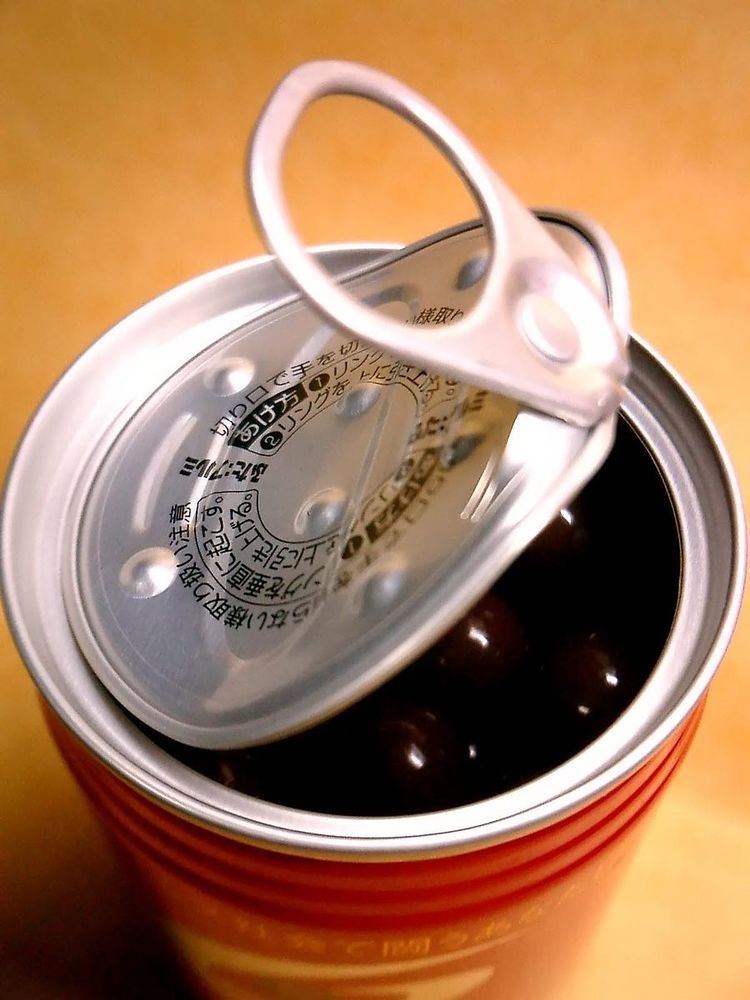 | ||
An aluminum can (British English: aluminium can), sometimes erroneously referred to as a "tin can", is a container for packaging made primarily of aluminum. It is commonly used for foods and beverages but also for products such as oil, chemicals, and other liquids. Global production is 180 billion annually and constitutes the biggest single use of aluminum globally.
Contents
Usage
Use of aluminum in cans began in 1957. Aluminum offers greater malleability, resulting in ease of manufacture; this gave rise to the two-piece can, where all but the top of the can is simply stamped out of a single piece of aluminum, rather than laboriously constructed from two pieces of steel. A label is either printed directly on the side of the can or will be glued to the outside of the curved surface, indicating its contents.
Most aluminum cans are made of two pieces. The bottom and body are "drawn" or "drawn and ironed" from a flat plate or shallow cup. After filling, the can "end" is sealed onto the top of the can.
The advantages of aluminum over steel (tinplate) cans include;
The easy-open aluminum end for beverage cans was developed by Alcoa in 1962 for the Pittsburgh Brewing Company and is now used in nearly 100% of the canned beer market.
Recycling
Aluminum cans are often made with recycled aluminum; approximately 68% of a standard North American can is recycled aluminum. In 2012, 92% of the aluminum beverage cans sold in Switzerland were recycled. Cans are the most recycled beverage container, at a rate of 69% worldwide.
According to Alcoa Aluminum Company, in 2015 about 34 cans are required to achieve a weight of one pound. The unstated assumption is that most of those will be the normal 12-oz type can. Wise Recycling in Pensacola, FL also reported that the price they paid for aluminum cans varied, based on the published price of aluminum in the commodities market. They denied that there was a seasonal price fluctuation, and stated that the nationally published commodity price was the sole determining factor in what they paid. Some recycle centers pay a slightly higher price (normally 2 cents) for 100 pounds or more of cans, while others pay the same price regardless of the weight being submitted.
One issue is that the top of the can is made from a blend of aluminum and magnesium to increase its strength. When the can is melted for recycling, the mixture is unsuitable for either the top or the bottom/side. Instead of mixing recycled metal with more aluminum (to soften it) or magnesium (to harden it), a new approach uses annealing to produce an alloy that works for both.
The aluminum can is also considered the most valuable recyclable material in an average recycling bin. It is estimated that Americans throw away nearly 1 billion dollars a year in wasted aluminum. The aluminum industry pays nearly 800 million dollars a year for recycled aluminum since it is so versatile.
